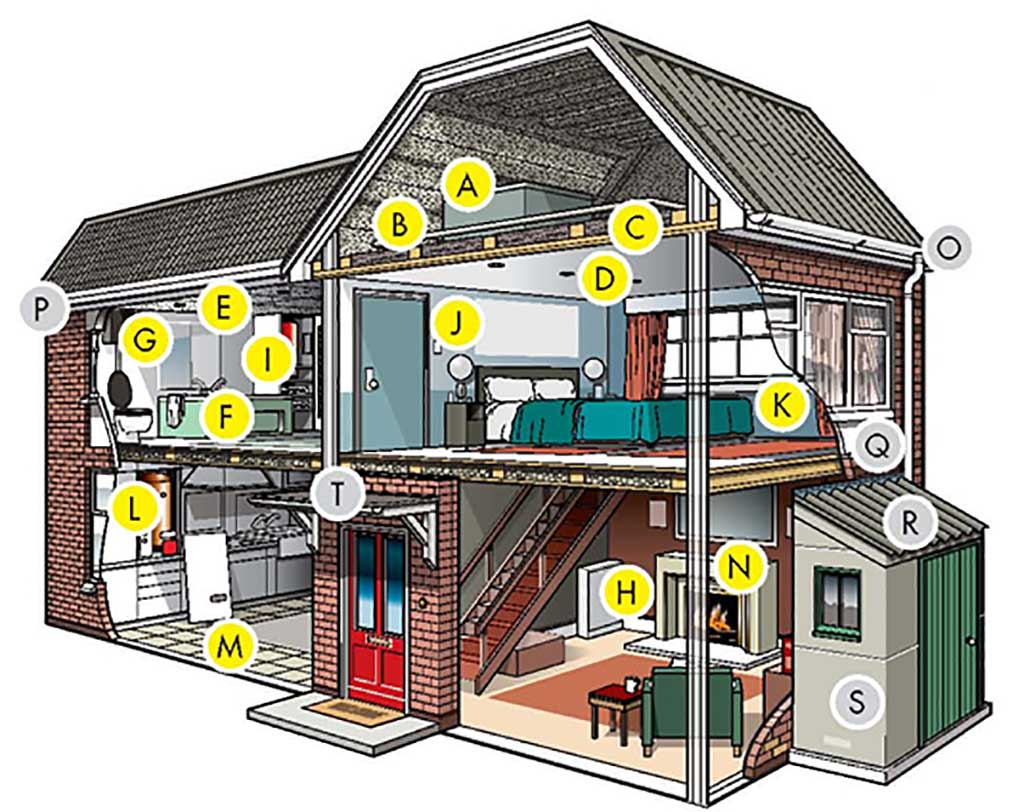There are only two ways to determine if a material contains asbestos. The first way is to contact the manufacturer of the product. If you are not sure who the manufacturer of the product is, the individuals who installed the material may know. If you are unable to track down the origin of the material, the only other way to determine if asbestos is present it to have the material tested by a laboratory. In order for a lab to determine if a material has asbestos in it, a sample must be studied under a microscope.
|
Inside A. Asbestos cement water tank |
Outside O. Gutters and asbestos cement downpipes AIB = Asbestos Insulating Board
|
Samples of suspect asbestos-containing material from a private residence can be taken by asbestos professionals or by the homeowner himself.
A list of asbestos professionals can be found here or by checking the yellow pages of your local phone book under the heading "Environmental Consultants". A list can also be obtained from DHEC free of charge. If you decide to sample a suspect asbestos-containing material yourself, there are certain precautions that should be taken.
Contact
Asbestos Section (803) 898-4289
